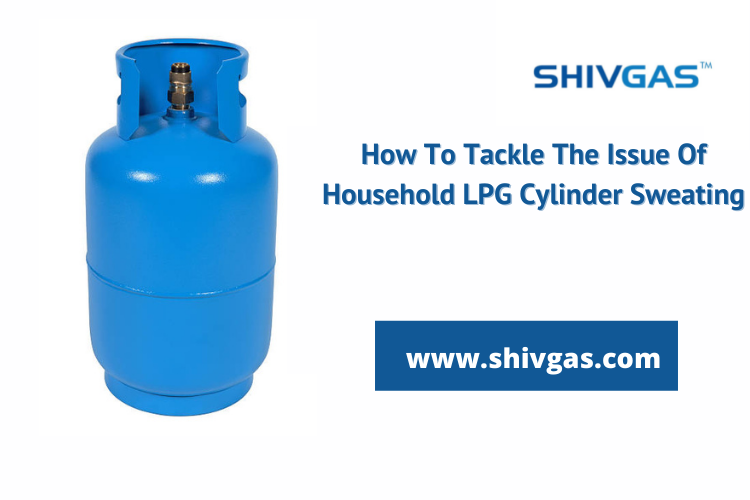
At times you have seen tiny droplets on the outer surface of the cylinder that makes it look like sweating. LPG cylinder sweating especially happens in restaurants or hotels. You might have been bewildered about how this happens as there is no water source connected to the cylinder.
Let us explain to you what is phenomenon is!
The formation of droplets on the cylinder is called LPG cylinder sweating. As you know, LPG cylinders have compressed liquefied petroleum gas. The liquid is filled up to 80% of the cylinder's capacity while 20% remains vacant. The liquid inside the gas transforms to vapor inside the cylinder naturally under ambient conditions.
The converted vapor passes go to the burner. The rate of vaporization in the cylinder is 0.6kg/hr which is very low. When the requirement of gas in the burner increases, the conversion rate of vapor is not able to sustain the requirement.
Therefore, the LPG cylinder draws heat from the surroundings to convert the liquid into vapor which leads to a drop in temperature in the surrounding areas. This cooling effect leads to condensation hence you can see tiny water droplets forming on the surface of the cylinder. In the extreme condition when there is more than 6 burner connected to one LPG cylinder it leads to the formation of ice on the surface of the cylinder.
As we have explained the phenomenon, you must have understood this happens due to the improper design of domestic LPG cylinders. This happens because the VOT cylinder is not designed for heavy use.
To tackle this recurring issue in restaurant/hotel/small industries you must opt for LOT cylinders. LOT stands for liquid off-take cylinder.
Read More: LPG Safety Tips – How to Handle an LPG Leak?
The liquid off-take cylinder does not convert liquid into vapor inside the cylinder instead it passes the liquid LPG through the liquid off-take valve which is connected to a vaporizer. The burner is connected to the vaporizer. So, instead of passing the naturally converted vapor through the valve, it passes the liquid to a vaporizer that converts the liquid into vapor, and then it transfers to the burner. This eliminates the risk of LPG cylinder sweating.
To eliminate the risk of LPG cylinder sweating, you must opt for commercial gas in a hotel/restaurant. Consult SHIVGAS for commercial gas or LOT cylinder to avoid the risk of sweating on cylinders.
Comment (0)